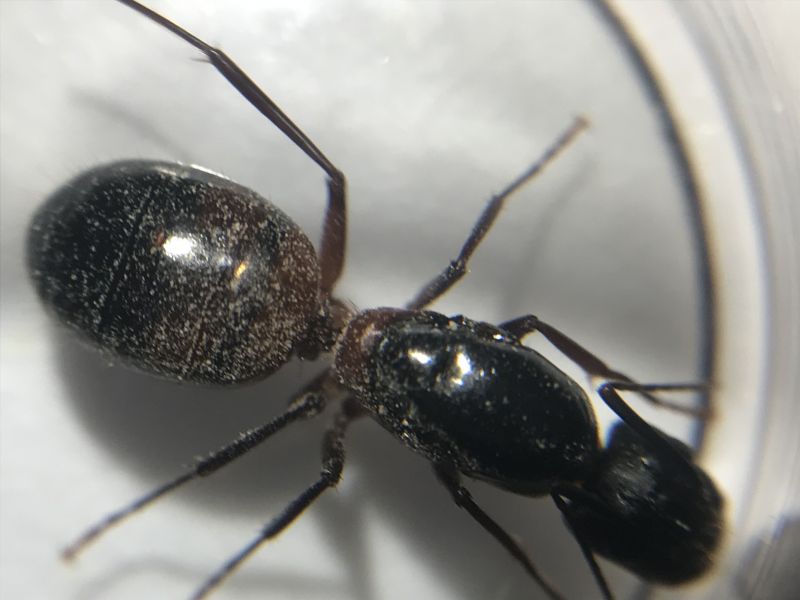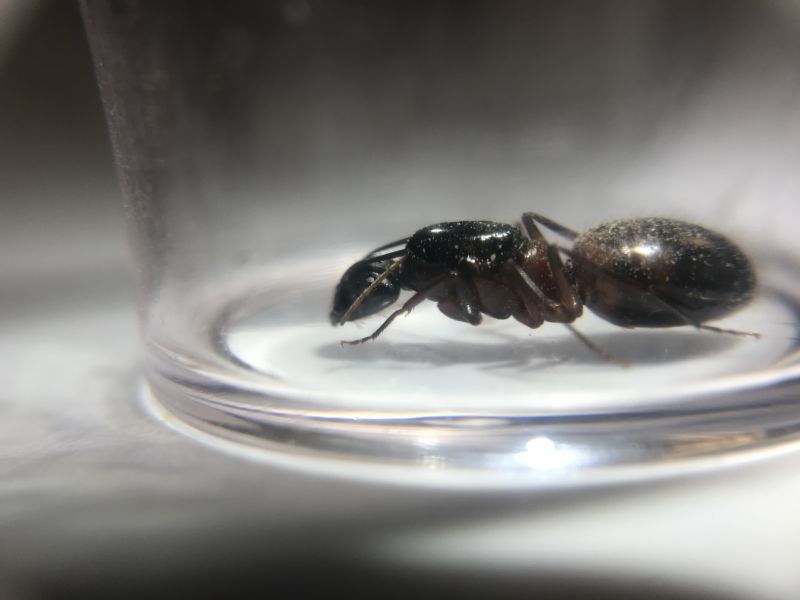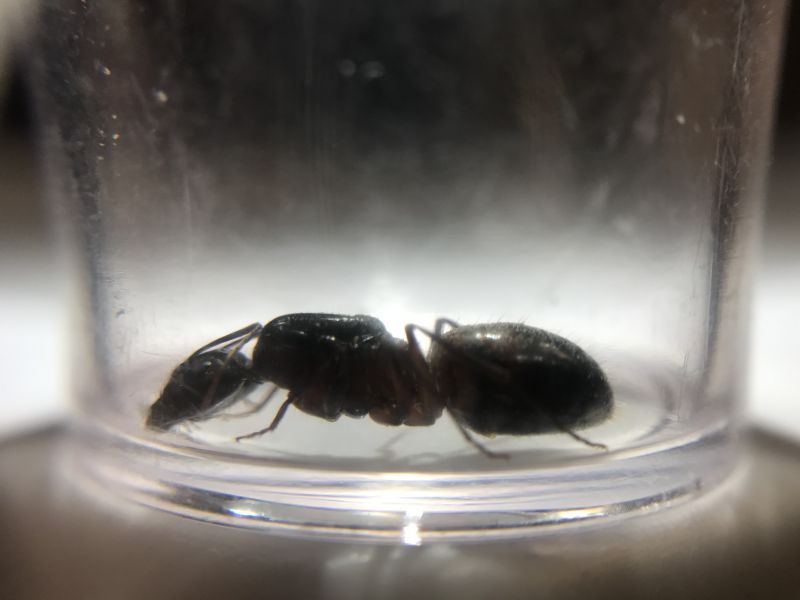1. Location (on a map) of collection: Grand Junction, CO.
2. Date of collection: 7-25-20
3. Habitat of collection: Straight up desert.
4. Length (from head to gaster): Just a touch over 15mm.
5. Color, hue, pattern and texture: black head and gaster. Thorax is black on top but brown/dark orange underneath to match leg color.
6. Distinguishing characteristics: Has quite long hairs on gaster.
7. Distinguishing behavior: Was quite slow when trying to get away after being spotted. Cannot climb glass or plastic even in the slightest.
8. Nest description: Never saw any nests of this type of ant.
9. Nuptial flight time and date: No idea when they flew, this one already had a burrow going, not sure how deep or far along she was.
She is a little dusty as the dirt she ran to after being discovered was very powdery.




















